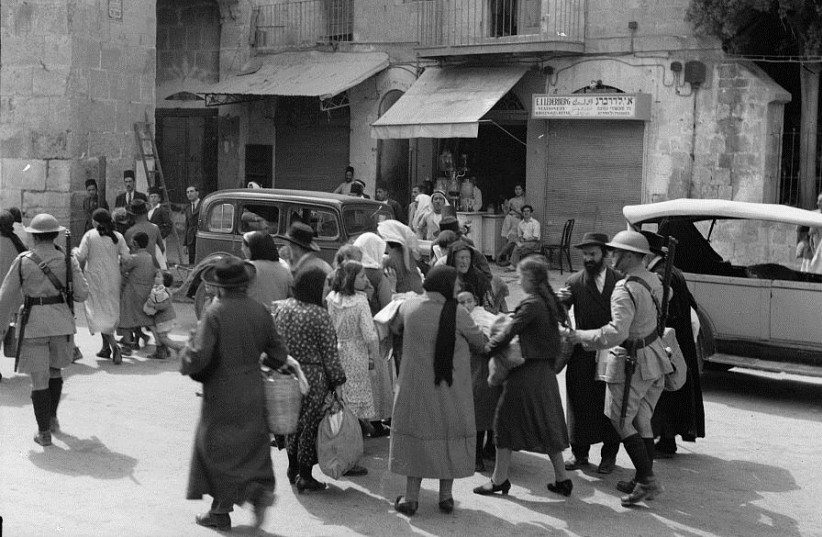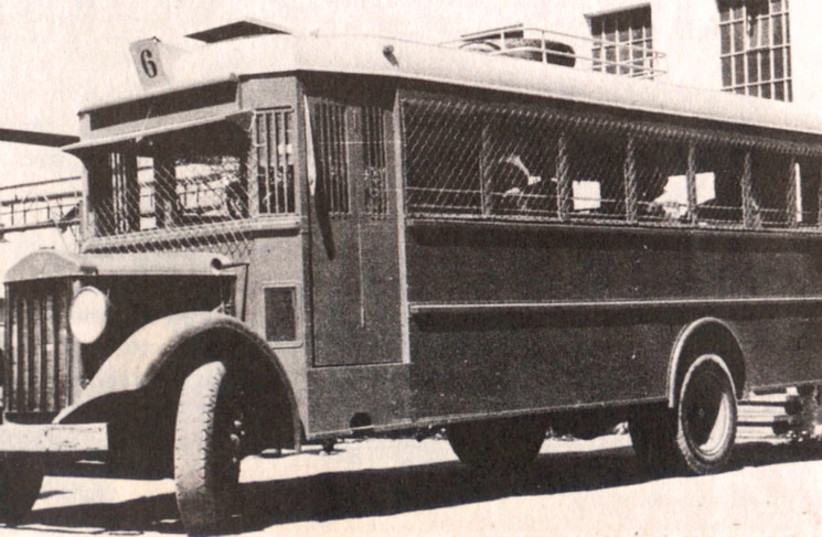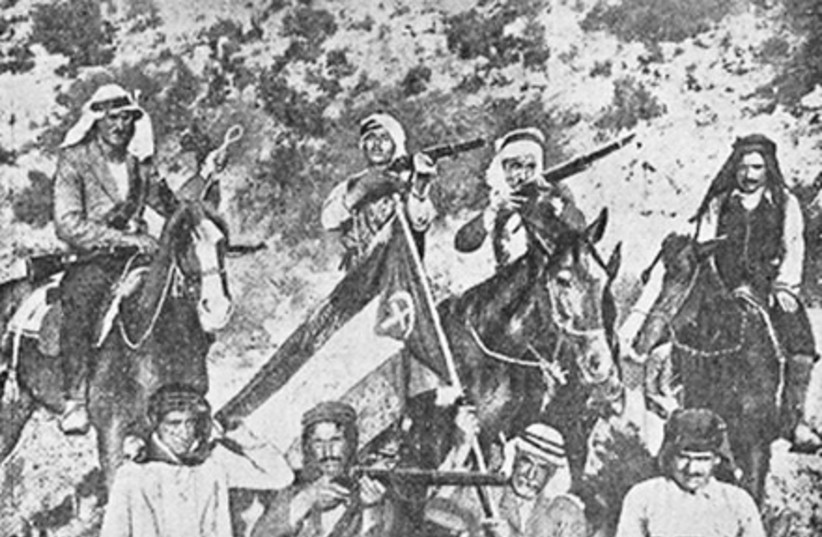April 15, 2022 marks 86 years since the Tulkarm shooting, when Arabs shot and killed two Jews in pre-state Israel and kicking off the 1936-1939 Arab revolt.
<br>The attack
On that day in 1936, a group of Arabs stopped several vehicles driving between Anabta and Tulkarm and demanded the drivers provide weapons and money, but two Jewish drivers and one passenger were separated and shot. One of the three Jews survived with injuries. Of the fatalities, one of them, a 70-year-old recent immigrant from what is now Thessaloniki in Greece named Israel Chazan, died immediately. The other, a man named Zvi Danberg who was carrying chickens, died of his wounds five days later.
According to contemporary reports in The New York Times and The Palestine Post, the latter now known as The Jerusalem Post, the reason why the Arabs were taking weapons and money from drivers was to carry on the legacy of Izzadin al-Qassam — a Muslim preacher who resisted colonial rule in the region and staunchly opposed Jews and Zionism who had died the previous November — and kill "all Jews and Britons in Palestine."
Retaliation from Jews came the next day when Jews killed two Arabs in Petah Tikva and further led to protests against the British. The British then further attempted to crack down on the populace of Mandatory Palestine. However, the attack itself proved to have a much bigger impact than this, as it is widely held as the beginning, if not the direct prelude, to the incredibly violent Arab revolt that raged through Mandatory Palestine for the next three years.

The background
The Tulkarm shooting was the spark behind the revolt but the conditions building up the metaphorical powder keg had long been in place.
An economic crisis was in place in the region following the end of World War I as the Ottomans had heavily taxed the locals, ruining their finances. This crisis was further exacerbated when the Great Depression hit. As time went on, more and more poor Arab farmers were forced to leave their lands after the indebted tenants had their land transferred to groups like the Jewish National Fund and the Yishuv movement began to expand.
Soon, these poor Arab farmers ended up in slums and shanty towns near Haifa and Jaffa as their traditional livelihoods were gone and they had to adapt, working low-paying jobs as labor forced them to stay in poverty. It was here, especially near Haifa where Qassam would preach, that radical nationalist sentiments began to spread rapidly.
A few other incidents would also occur in the lead-up. Chief among these was the discovery of a clandestine shipment in October of weapons and ammo to the Haganah that was discovered in Jaffa that made Arabs worry of a possible military takeover by the Jews; the killing of a Jewish policeman some weeks after that; and Qassam's death at the hands of police.
The Tulkarm shooting soon became the final straw, as did the fact that authorities refused requests for a funeral ceremony for Chazan despite having allowed Qassam to have had one months earlier, sparking resentment among many Jews who began protesting and in some cases rioting in Tel Aviv, followed by the killing of two Arabs in Petah Tikva.
Soon, clashes began erupting between Jews and Arabs throughout the Tel Aviv area, eventually culminating in the Jaffa riots on April 19 which saw the deaths of 14 Jews and two Arabs.
The violence only continued to escalate, with tens of thousands of Arabs, Jews and British forces mobilized over the next three years that spread throughout Mandatory Palestine. The revolt had begun.
<br>Aftermath and legacy
After three years, the brutal uprising came to an end with British forces suppressing the revolt. The fighting was undoubtedly a loss for the Arabs, with over 5,000 Arabs killed and at least 15,000 wounded. By contrast, Jewish casualties were over 300 and British casualties stood at 262.
For the Jews, it ended up benefiting them heavily. Further development was made on Tel Aviv, such as the establishment of a port separate from the port of Jaffa, and more Jews were hired to replace Arabs as they went on strike during the revolt. It also gave members of the Haganah more experience and even military training during their cooperation with British forces.

For the local Arabs, the revolt came a hefty cost, further weakening their military, political and economic base and, according to some analysts, critical in crippling the Arab forces ahead of the Israeli war of independence in 1948.
However, it did come with some benefits for the Arabs.
For one thing, as some experts have noted, the revolt led to the creation of the Palestinian identity for the local Arab population, which to this day see themselves as a distinct national identity.

Secondly, and more widely accepted, is the role the revolt had in leading the British to create the White Paper of 1939. This document was heavily significant as it reflected the growing British disillusion with a partition plan for Jews and Arabs in Mandatory Palestine, rather instead pushing to create a binational state. In particular, the White Paper heavily limited Jewish immigration.
Neither the Jews nor the Arabs were happy with this plan and it would only further serve to raise resentment and inflame tensions in the region.
But for the British, all things considered, they had bigger things to worry about with World War II about to erupt in Europe. As far as the British leadership was concerned, trying to keep the Arabs happy over the Jews was a bigger priority.
But overall, the true legacy of the revolt is a matter of debate, with the subject still analyzed by modern historians and the reverberations still impacting geopolitical affairs till this day.
